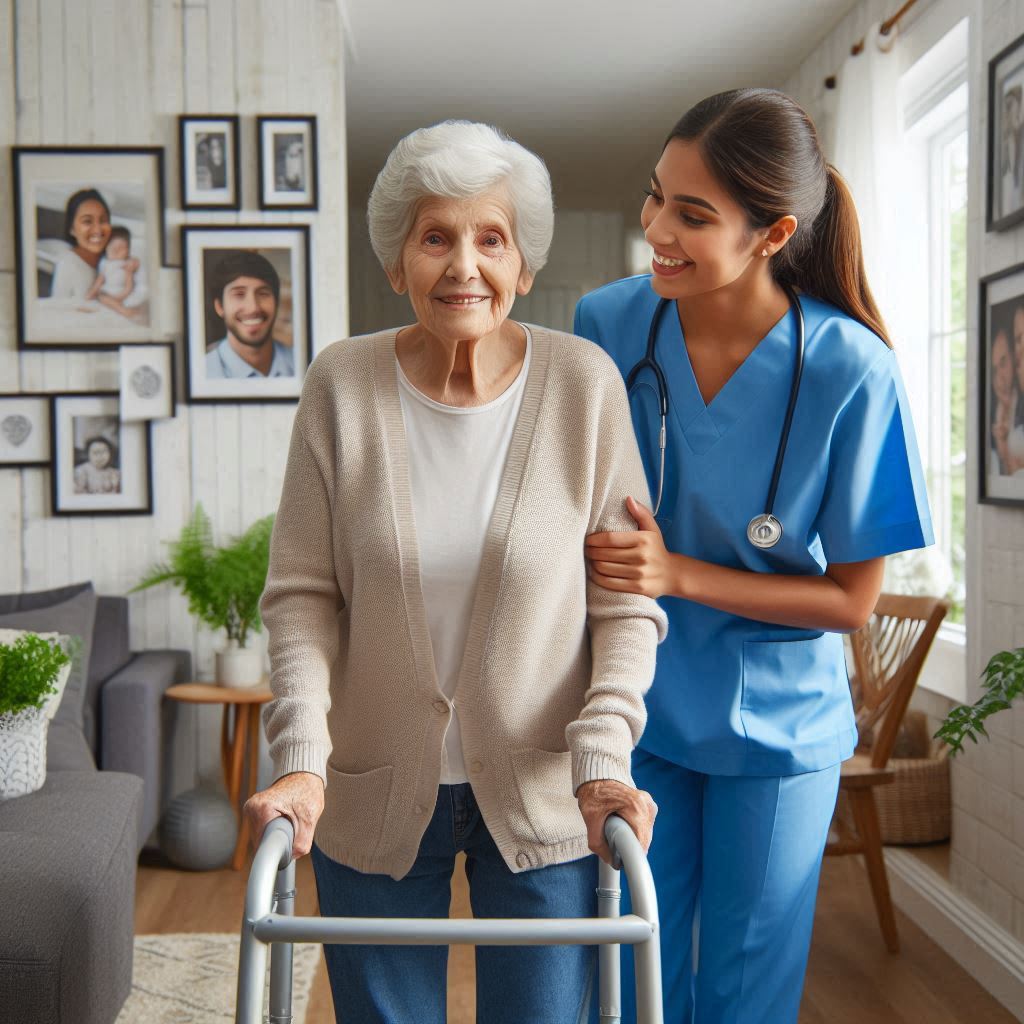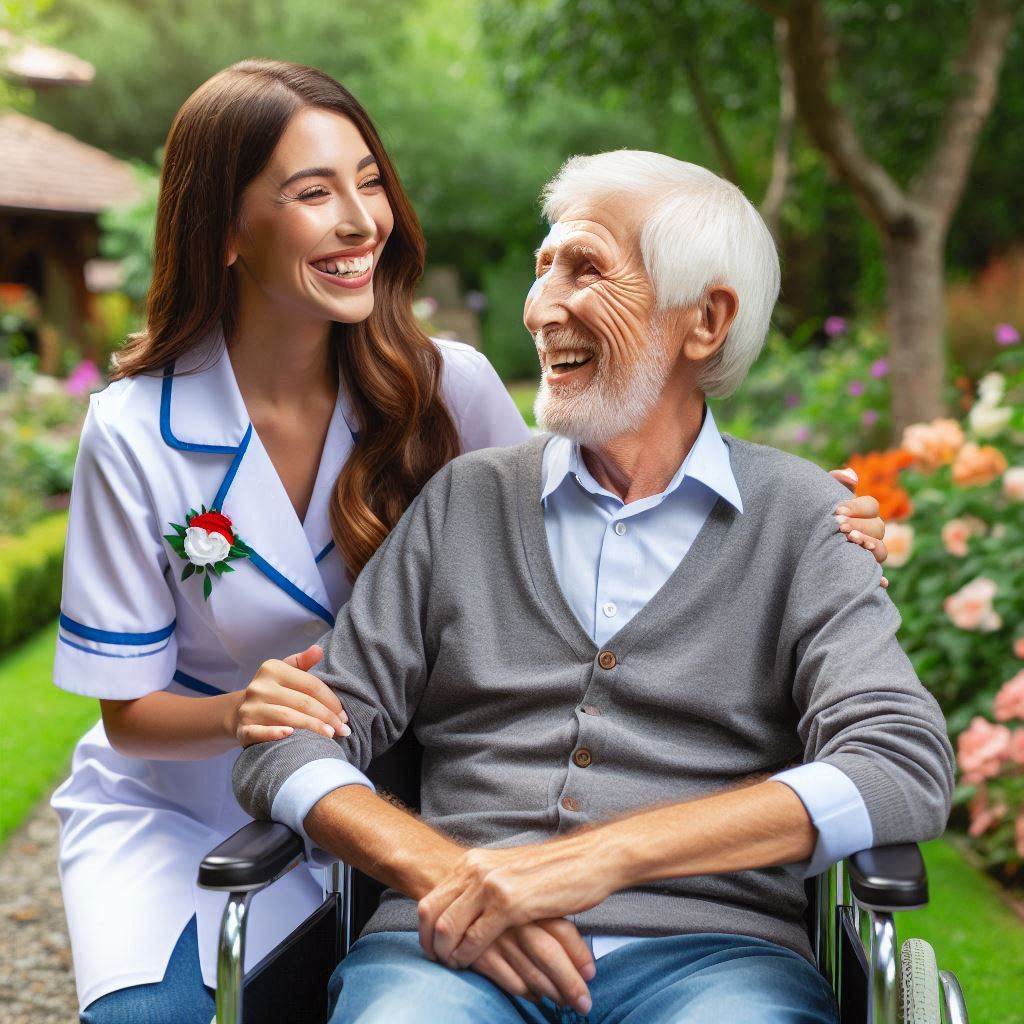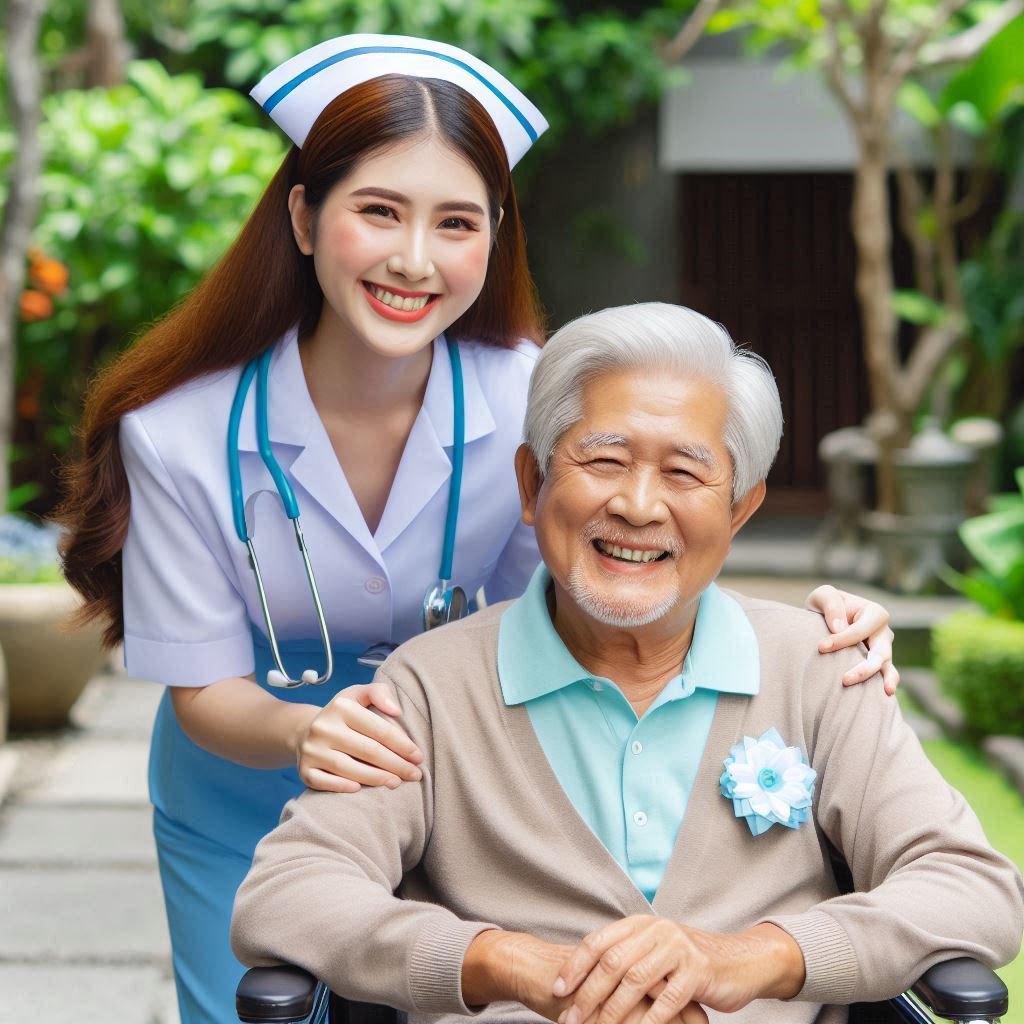Introduction
Home health aides play a crucial role in providing care to patients in their homes.
Their responsibilities include assisting with daily activities, administering medication, and monitoring vital signs.
However, emergencies can arise unexpectedly, requiring quick and efficient action.
Being prepared for such situations is essential for ensuring patient safety and delivering high-quality care.
A home health aide supports patients with their daily needs, enabling them to live comfortably at home.
Duties include helping with personal hygiene, meal preparation, and light housekeeping.
They also monitor patients’ health by checking vital signs and reporting changes to medical professionals.
Aides provide companionship and emotional support, enhancing patients’ overall well-being.
Their role is vital in the healthcare continuum, bridging the gap between hospital care and independent living.
Importance of Being Prepared for Emergencies in This Role
Preparation for emergencies is a critical aspect of a home health aide’s job.
Emergencies can range from sudden illness to accidents, requiring immediate and decisive action.
Being well-prepared ensures the aide can handle situations calmly and effectively, minimizing potential harm.
Knowledge of basic first aid and CPR is essential, along with familiarity with the patient’s specific health conditions and emergency protocols.
Quick access to emergency contacts and medical information can make a significant difference in critical moments.
Regular training and drills help maintain readiness, ensuring that aides respond appropriately under pressure.
Recognizing Signs of an Emergency
Home health aides must be vigilant and able to recognize early signs of an emergency.
Symptoms such as difficulty breathing, sudden pain, or unusual behavior changes should raise immediate concern.
Observing these signs allows aides to act swiftly, potentially preventing the situation from worsening.
Training in recognizing these signs is crucial for providing timely intervention and ensuring patient safety.
Developing an Emergency Plan
An effective emergency plan includes knowing emergency contact numbers, the nearest hospital, and specific instructions for different scenarios.
Home health aides should collaborate with family members and healthcare professionals to develop a comprehensive plan.
Regularly reviewing and practicing this plan ensures everyone knows their role during an emergency.
Having a clear and concise plan can significantly reduce response time and improve outcomes.
Importance of Communication
Clear and effective communication is vital during emergencies.
Home health aides should promptly inform medical professionals and family members about the situation.
Providing accurate and detailed information helps healthcare providers make informed decisions.
Good communication skills also involve calming the patient and explaining the steps being taken.
This helps reduce anxiety and ensures cooperation during the emergency response.
Staying Calm and Focused
Maintaining composure during an emergency is crucial for effective response.
Panic can hinder decision-making and delay necessary actions.
Home health aides should practice techniques for staying calm, such as deep breathing and focusing on the task at hand.
A calm demeanor reassures the patient and helps in managing the situation efficiently.
Confidence in one’s training and abilities plays a significant role in handling emergencies effectively.
Basically, being a home health aide requires not only providing daily care but also being prepared for emergencies.
Understanding the role, recognizing signs of trouble, having an emergency plan, communicating effectively, and staying calm are key elements in handling emergencies successfully.
Proper preparation and training ensure that home health aides can provide the best possible care in any situation.
Understanding the common emergencies that may occur
Identifying Potential Emergencies in a Home Health Care Setting
As a home health aide, being able to recognize potential emergencies is crucial.
These can range from sudden changes in a client’s condition to accidents such as falls or choking incidents.
Understanding the environment and the client’s health status helps in preemptively identifying situations that could escalate into emergencies.
Knowing the Signs and Symptoms to Watch For
Being vigilant about signs and symptoms allows home health aides to intervene promptly.
Symptoms can vary widely depending on the client’s health conditions, but common indicators include sudden weakness, difficulty breathing, chest pain, confusion, and loss of consciousness.
Regular monitoring and communication with the client and their family enable aides to spot these warning signs early.
Understanding the Importance of Quick Response in Emergencies
In emergencies, every second counts.
Rapid response can significantly impact the outcome for the client.
It involves staying calm under pressure, assessing the situation swiftly, and taking decisive action.
Immediate steps might include calling emergency services, administering first aid (if trained), and notifying the client’s primary healthcare provider.
Aides must also keep emergency contact information readily accessible.
As a home health aide, preparedness and proactive monitoring are key.
By familiarizing yourself with potential emergencies, recognizing warning signs, and responding swiftly, you play a crucial role in ensuring the safety and well-being of your clients.
Read: Surgical Technologist Job Outlook: Demand and Opportunities
Preparing an Emergency Response Plan
Creating a detailed emergency plan for different scenarios is crucial for home health aides.
Begin by identifying potential emergencies such as falls, medical crises, or natural disasters.
Each scenario should have specific steps outlined, including when to call 911, how to administer basic first aid, and whom to contact for immediate assistance.
Discussing the plan with the home health care agency ensures everyone is on the same page.
This collaboration helps in refining the plan based on agency protocols and updates on the client’s health status.
Moreover, involving the client’s family in these discussions is essential.
They can provide valuable insights into the client’s preferences and any unique considerations during emergencies.
Ensuring all necessary emergency contacts are readily available is a proactive measure.
Compile a list that includes local emergency services, the client’s primary care physician, and close family members.
Keep this list updated and accessible in both digital and physical formats within the client’s home.
This preparation ensures that crucial contact information is always at hand during critical situations.
Recognizing and Responding to Emergencies
Recognizing signs of medical emergencies is a fundamental skill for home health aides.
Training in basic medical assessment is beneficial for identifying symptoms like chest pain, difficulty breathing, or sudden changes in consciousness.
Act promptly according to the emergency plan, prioritizing the safety and well-being of the client.
Responding calmly and efficiently helps maintain control of the situation.
Communicate clearly with emergency responders, providing concise information about the client’s condition and any actions taken.
Reassure the client and their family members while awaiting professional help.
This approach fosters a sense of security and trust during stressful events.
Maintaining Emergency Preparedness
Regularly reviewing and updating the emergency plan is essential.
Changes in the client’s health status or living environment may necessitate adjustments to the plan’s details.
Schedule periodic drills to practice emergency procedures, ensuring familiarity and readiness among all involved parties.
Evaluate these drills to identify areas for improvement and implement necessary changes.
Staying informed about local emergency resources enhances preparedness.
Familiarize yourself with nearby hospitals, urgent care centers, and community support services.
Knowing alternative routes in case of road closures or accessing emergency supplies like first aid kits further strengthens your ability to respond effectively.
In essence, Handling emergencies as a home health aide requires proactive planning, swift action, and ongoing readiness.
By preparing a detailed emergency response plan, discussing it with relevant parties, and ensuring all contacts are readily available, you establish a foundation for effective crisis management.
Recognizing emergencies promptly, responding calmly, and maintaining preparedness through regular updates and training drills are key practices to safeguard the well-being of your clients.
With these strategies in place, you can confidently navigate challenging situations and provide vital support in times of need.
Read: Continuing Education for Surgical Technologists: Why It Matters
Maintaining communication during emergencies
During emergencies, clear and effective communication is crucial in ensuring that the necessary actions are taken promptly.
As a home health aide, it is your responsibility to maintain communication with various parties involved, including the client, their family, and healthcare providers.
Importance of clear communication with the client, family, and healthcare providers
- Clear communication helps in understanding the situation and any immediate needs of the client.
- It ensures that the family members are informed about the emergency and can provide support.
- Healthcare providers need accurate information to make informed decisions about the client’s care.
Ensuring the client’s medical history and information is easily accessible
- Keep important documents, such as medical history, medication lists, and emergency contacts, in a readily accessible location.
- Update the client’s medical information regularly to ensure accuracy and relevance during emergencies.
- Inform family members and healthcare providers about where to find the client’s medical information in case of emergencies.
Keeping calm and providing reassurance to the client during emergencies
- Remain calm and composed to reassure the client that help is on the way.
- Speak in a comforting tone and provide assurance that you are there to support them.
- Follow any emergency protocols in place and seek immediate assistance if needed.
By maintaining clear communication, ensuring easy access to medical information, and providing reassurance during emergencies, you can effectively handle unexpected situations as a home health aide.
Read: Common Challenges Faced by Surgical Technologists

Properly assessing the situation
- Conduct a quick assessment of the situation and the client’s condition.
- Observe the environment to identify any potential hazards or dangers.
- Check the client’s vital signs such as pulse, breathing, and temperature.
- Assess the client’s level of consciousness and responsiveness.
It is essential to promptly and accurately assess the situation to determine the appropriate course of action.
By conducting a thorough evaluation, you can identify the severity of the emergency and provide the necessary assistance.
Knowing when to seek assistance from emergency services
- If the client is experiencing difficulty breathing, chest pain, or severe bleeding, call 911 immediately.
- For any signs of stroke, such as sudden numbness, confusion, or difficulty speaking, seek emergency help.
- When in doubt about the seriousness of the situation, do not hesitate to contact emergency services.
- Notify the client’s healthcare provider or family members about the emergency situation for additional support.
Recognizing the need for professional help is crucial in ensuring the client receives prompt and appropriate medical attention.
Do not delay in seeking assistance from emergency services when necessary.
Understanding when to take action and when to wait for professional help
- If the client is unresponsive, perform CPR immediately and continue until help arrives.
- For minor injuries or non-life-threatening situations, provide first aid and monitor the client’s condition closely.
- Follow the care plan provided by the healthcare provider for specific instructions on handling emergencies.
- Keep calm and reassure the client to help them feel safe and secure during the emergency.
It is important to assess the situation carefully to determine whether immediate action is required or if it is safe to wait for professional help. Always prioritize the client’s safety and well-being in any emergency situation.
Transform Your Career Today
Unlock a personalized career strategy that drives real results. Get tailored advice and a roadmap designed just for you.
Start NowRead: Advancement Opportunities for Surgical Technologists
Handling medical emergencies
Responding to Common Medical Emergencies
When faced with a medical emergency as a home health aide, it is crucial to stay calm and act swiftly.
Being prepared and knowing how to respond can make a significant difference in the outcome for your client.
Here are some common medical emergencies you may encounter and how to handle them effectively.
Heart Attacks
A heart attack occurs when blood flow to part of the heart muscle is blocked.
If your client shows signs of a heart attack such as chest pain, shortness of breath, or nausea, call emergency services immediately.
While waiting for help to arrive, have the client sit upright, reassure them, and monitor their vital signs.
Strokes
Strokes happen when blood flow to the brain is interrupted, leading to brain damage.
If you suspect your client is having a stroke (sudden numbness, confusion, trouble speaking), call 911 right away.
Keep the client calm, note the time when symptoms began, and do not give them anything to eat or drink.
Falls
Falls are a common cause of injury among the elderly.
If your client falls, assess for injuries and call for help if necessary.
Do not move the client unless they are in immediate danger.
Keep them warm and comfortable while waiting for medical assistance.
Administering First Aid and Basic Life Support
As a home health aide, you may be required to administer first aid and basic life support in emergency situations.
It is essential to have the necessary skills and knowledge to provide immediate care to your clients when needed.
Basic life support techniques such as CPR (cardiopulmonary resuscitation) can be life-saving in situations like cardiac arrest.
Knowing how to perform CPR correctly can increase the chances of survival for your client until medical help arrives.
Additionally, being able to control bleeding, apply bandages, and stabilize fractures are essential skills for handling emergencies effectively.
Knowledge of Medication Administration in Emergencies
In some emergency situations, you may need to administer medications to your clients.
It is crucial to have a basic understanding of medication administration, including the correct dosage, route, and possible side effects.
Always follow the client’s care plan and medication orders provided by their healthcare provider.
Be prepared by knowing where the client’s medications are kept, how to properly administer them, and what to do in case of adverse reactions.
Keep a list of the client’s medications handy, along with emergency contact numbers for their healthcare provider and pharmacy.
Dealing with non-medical emergencies
Addressing situations such as fires, floods, and power outages
As a home health aide, being prepared for non-medical emergencies is crucial.
In the event of a fire, remain calm and assess the safest exit route for both yourself and the client.
If possible, use fire extinguishers to contain small fires, but never endanger yourself or the client.
In cases of floods or power outages, ensure the client’s safety by checking for potential hazards like electrical appliances near water or ensuring they have adequate lighting and access to essential supplies.
Ensuring the client’s safety and comfort during non-medical emergencies
During emergencies like fires or floods, prioritize the client’s comfort by reassuring them and providing emotional support.
Keep emergency supplies readily accessible, such as blankets, water, and non-perishable food items.
Maintain clear communication with emergency services and family members to ensure prompt assistance if needed.
Regularly review emergency plans with the client and their family to update them on any changes or additional needs.
Knowing when to evacuate the client and how to do so safely
Evacuation procedures should be practiced and clearly understood in advance.
Assess the situation to determine if evacuation is necessary, considering factors like the severity of the emergency and the client’s mobility.
Always have an emergency kit prepared with essential items such as medications, medical records, and contact information for healthcare providers.
When evacuating, assist the client calmly and prioritize their physical safety, using mobility aids or other necessary equipment as required.
In general, as a home health aide, your preparedness and quick thinking are essential during non-medical emergencies.
By addressing potential hazards proactively, ensuring the client’s comfort and safety, and knowing when and how to evacuate safely, you can effectively manage emergencies and minimize potential risks.
Regular training and communication with healthcare providers and emergency services will enhance your ability to handle unexpected situations with confidence and professionalism.
Post-emergency procedures
After an emergency situation has been handled as a home health aide, it is crucial to follow up with certain important steps to ensure the safety and well-being of the client.
Documenting the emergency
- Write down detailed notes about the emergency, including the date, time, and specific details of what occurred.
- Document the actions you took during the emergency to address the situation effectively.
- Include any observations you made about the client’s condition before, during, and after the emergency.
Following up with the client’s healthcare provider
- Contact the client’s healthcare provider to inform them of the emergency and the actions taken during the situation.
- Provide any relevant information that may assist the healthcare provider in assessing the client’s health status post-emergency.
- Follow any instructions or recommendations given by the healthcare provider to ensure the client’s continued well-being.
Conducting a review of the emergency response plan
- Review the emergency response plan that was followed during the emergency to assess its effectiveness.
- Identify any areas of improvement or changes that need to be made to better handle similar emergencies in the future.
- Update the emergency response plan accordingly and ensure all relevant parties are informed of the changes.
By following these post-emergency procedures as a home health aide, you can help ensure that you are prepared to handle future emergencies effectively and provide the best possible care for your clients.
Conclusion
As a home health aide, being prepared and responding swiftly during emergencies are paramount.
Your ability to handle these situations can significantly impact patient outcomes and safety.
Importance of preparedness and quick response in handling emergencies as a home health aide
Preparedness begins with knowing your patient’s medical history and any potential risks.
Familiarize yourself with emergency protocols specific to the home environment.
This proactive approach ensures you can act decisively when seconds count.
Understanding the signs of common emergencies such as falls, heart attacks, or strokes is crucial.
Recognizing these early symptoms allows you to intervene promptly, potentially preventing escalation.
Regularly updating your knowledge through training sessions keeps your skills sharp.
Encouraging ongoing training and education in emergency response skills for home health aides
Continuous education is essential for staying current with best practices and new techniques in emergency response.
Participate in workshops or online courses that offer hands-on scenarios to simulate real-life situations.
These experiences build confidence and readiness.
Collaboration with healthcare professionals and emergency responders enhances your ability to coordinate care effectively.
Establishing clear communication channels ensures swift responses and informed decision-making during critical moments.
In closing, as a home health aide, your role in emergency situations is invaluable.
By prioritizing preparedness and ongoing education, you not only enhance patient safety but also strengthen your professional capabilities. Stay proactive, stay informed, and be ready to make a difference when it matters most.




